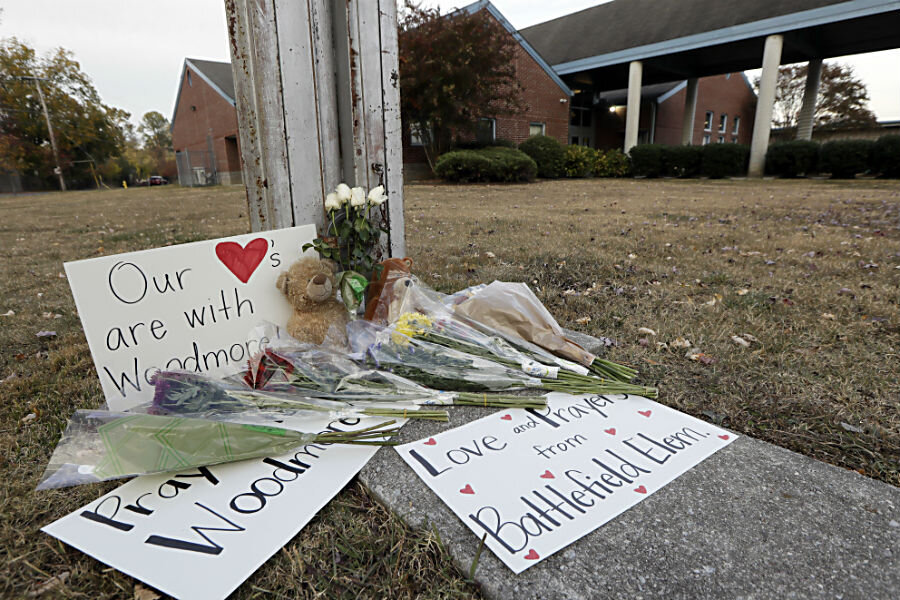Chattanooga crash: Should school buses have seat belts?
Loading...
The debate over whether school buses should be equipped with seat belts was reignited after a deadly bus crash in Chattanooga, Tennessee.
The Monday crash, which killed five children and sent several more to the hospital, has some asking whether more would have been saved if the bus had been equipped with seat belts. There is no federal requirement for school buses to come equipped with such devices, and even in some states that do have them, it is sometimes left up to the individual school districts to require their implementation.
Fatalities on school buses are rare, due to the size, design, and weight of the yellow behemoths. While crashes do happen, deaths resulting from those crashes are unusual, even on buses with no safety belt. For many districts, the cost of updating buses with seat belts is prohibitively expensive. But for a grieving parent, no cost is too high to save even a small number of children.
"Installing seat belts on buses is not free, and requiring their installation might mean reducing funding on other critical safety aspects, such as crossing guards for those children who do walk to school," Richard Williams, former director of the regulatory studies program at the Mercatus Center at George Mason University, told CNN. "But this is a decision each community must make for their own children. There are very, very few deaths of children from school bus accidents, and there may be other expenditures that will be better investments to reduce risk."
Even without seat belts, school buses are considered one of the safest modes of transportation in the United States. They are large and highly visible to other drivers, and their size means they can take a fairly substantial collision without gravely harming its passengers. Buses' interiors are designed to surround the children with padding and have an excellent track record of keeping them safe, as the Christian Science Monitor's Beatrice Gitau explained last year:
The National Highway Traffic Safety Administration (NHTSA) tout school buses as the safest method for transporting students to and from school. In fact, the NHTSA says that American students are nearly eight times safer riding in a school bus than with their own parents and guardians in cars.
According to NHTSA data, "from 2004 to 2013 there were 327 school-age children who died in school-transportation-related crashes; 54 were occupants of school transportation vehicles, 147 were occupants of other vehicles, 116 were pedestrians, 9 were pedal cyclists, and 1 was other nonoccupant."
Opponents argue that even that small number of fatalities could and should be further brought down by seat belts. CNN cites a similar crash, in Anaheim, Calif., to the one in Chattanooga. In the Anaheim crash, most of the conditions of the collision were the same, but there were no fatalities, likely due to the California bus being equipped with seat belts, while the Chattanooga bus was not.
There have been arguments by some opponents of seat belts in buses that in an emergency, panicking children might become trapped under the safety belts, though that would be the case for a collision in a normal vehicle as well. In addition, most children have been trained from a young age how to use seat belts and are usually comfortable with them.
Government agencies have estimated the cost of retrofitting school buses with seat belts at anywhere from $7,000 to $10,000 per bus. In smaller communities and poorer school district, that cost adds up, especially as buses without seat belts often squash in three students to a seat. In order to accommodate all students in a two-per-seat, seat belt arrangement, some school districts might have to purchase another bus, further adding to the expense, for what is already considered to be one of the safest methods of travel.
But for advocates of seat belts, any cost is surmountable for the safety of children.
"I don't deny that this is a challenge," National Highway Traffic Safety Administrator Mark Rosekind said, calling for a three-point seat belt on every bus in November 2015. "But I want us to concentrate on this simple basic statement: School buses should have seat belts. Period. It should be utterly uncontroversial – there is no question that seat belts offer improved safety."
This article contains material from the Associated Press.






